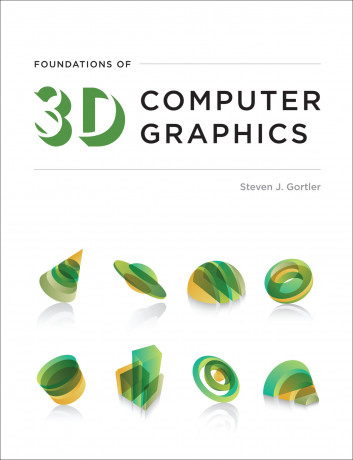Foundations of 3D Computer Graphics
ISBN: 9780262017350 | Copyright 2012
Instructor Requests
Computer graphics technology is an amazing success story. Today, all of our PCs are capable of producing high-quality computer-generated images, mostly in the form of video games and virtual-life environments; every summer blockbuster movie includes jaw-dropping computer generated special effects. This book explains the fundamental concepts of 3D computer graphics. It introduces the basic algorithmic technology needed to produce 3D computer graphics, and covers such topics as understanding and manipulating 3D geometric transformations, camera transformations, the image-rendering process, and materials and texture mapping. It also touches on advanced topics including color representations, light simulation, dealing with geometric representations, and producing animated computer graphics.
The book takes special care to develop an original exposition that is accessible and concise but also offers a clear explanation of the more difficult and subtle mathematical issues. The topics are organized around a modern shader-based version of OpenGL, a widely used computer graphics application programming interface that provides a real-time “rasterization-based” rendering environment. Each chapter concludes with exercises. The book is suitable for a rigorous one-semester introductory course in computer graphics for upper-level undergraduates or as a professional reference. Readers should be moderately competent programmers and have had some experience with linear algebra. After mastering the material presented, they will be on the path to expertise in an exciting and challenging field.
This book has changed the way I teach computer graphics. In particular, it offers the most rigorous and intuitive treatment of coordinate systems I have seen.
Fredo Durand MIT
This book provides a principled introduction to computer graphics, with emphasis on geometric concepts in rasterization. The description is fun and practical, using many examples in modern OpenGL, yet also conveys thoughtful intuition of the underlying theory. Many advanced topics, such as color and radiance, are brilliantly summarized. I highly recommend it.
Hugues Hoppe Microsoft Research
Destined to be a classic in the field, Foundations of 3D Computer Graphics deals with an extremely broad and important chunk of computer graphics and offers excellent coverage of these areas. It provides specific examples of the described techniques, and it is built on the solid mathematical underpinnings that are essential to understanding the foundations and subtleties of the topics. The theory is connected to the OpenGL API in a consistent and organized fashion. This work is appropriate as a stand-alone textbook for a course in computer graphics or as a reliable and wide-ranging guide for those developing applications.
Julie Dorsey Professor of Computer Science, Yale University
| Expand/Collapse All | |
|---|---|
| Contents (pg. vii) | |
| Preface (pg. xiii) | |
| I GETTING STARTED (pg. 1) | |
| 1 Introduction (pg. 3) | |
| 2 Linear (pg. 9) | |
| 3 Affine (pg. 21) | |
| 4 Respect (pg. 29) | |
| 5 Frames in Graphics (pg. 35) | |
| 6 Hello World 3D (pg. 45) | |
| II ROTATIONS AND INTERPOLATION (pg. 57) | |
| 7 Quaternions (a Bit Technical) (pg. 59) | |
| 8 Balls: Track and Arc (pg. 73) | |
| 9 Smooth Interpolation (pg. 77) | |
| III CAMERAS AND RASTERIZATION (pg. 87) | |
| 10 Projection (pg. 89) | |
| 11 Depth (pg. 101) | |
| 12 From Vertex to Pixel (pg. 109) | |
| 13 Varying Variables (Tricky) (pg. 119) | |
| IV PIXELS AND SUCH (pg. 125) | |
| 14 Materials (pg. 127) | |
| 15 Texture Mapping (pg. 137) | |
| 16 Sampling (pg. 149) | |
| 17 Reconstruction (pg. 161) | |
| 18 Resampling (pg. 167) | |
| V ADVANCED TOPICS (pg. 173) | |
| 19 Color (pg. 175) | |
| 20 What Is Ray Tracing? (pg. 197) | |
| 21 Light (Technical) (pg. 205) | |
| 22 Geometric Modeling: Basic Intro (pg. 227) | |
| 23 Animation: Not Even an Introduction (pg. 239) | |
| APPENDIXES (pg. 247) | |
| A Hello World 2D (pg. 249) | |
| B Affine Functions (pg. 263) | |
| References (pg. 267) | |
| Index (pg. 271) | |
| Instructors Only | |
|---|---|
|
You must have an instructor account and submit a request to access instructor materials for this book.
|

